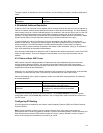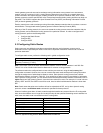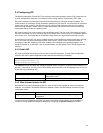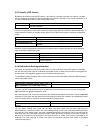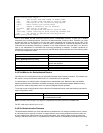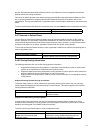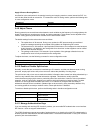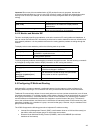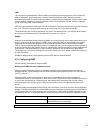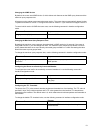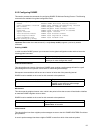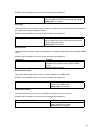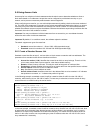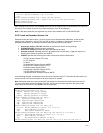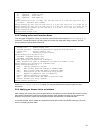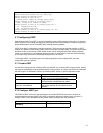
50
IGMP
The Internet Group Management Protocol (IGMP) manages the multicast groups on a LAN. IP hosts use
IGMP to report their group membership to directly connected multicast routers. Routers executing a
multicast routing protocol maintain forwarding tables to forward multicast datagrams. Routers use the IGMP
to learn whether
members of a group are present on their directly attached sub-nets. Hosts join multicast
groups by sending IGMP report messages.
IGMP uses group addresses, which are Class D IP addresses. The high-order four bits of a Class D address
are 1110. Therefore, host group addresses can be in the range 224.0.0.0 to 239.255.255.255.
The address 224.0.0.0 will not be assigned to any group. The address 224.0.0.1 is assigned to all systems
on a sub-net. The address 224.0.0.2 is assigned to all routers on a sub-net.
DVMRP
Distance Vector Multicast Routing Protocol (DVMRP) is a routing protocol that provides packet delivery to a
group of hosts across an inter-network. DVMRP routers dynamically discover their neighbors by sending
neighbor probe messages periodically to an IP multicast group address that is reserved for all DVMRP
routers. These mechanisms allow the formation of shortest-path trees, which are used to forward packets to
all group members from each network source of multicast traffic. Multicast packets are initially flooded down
a source tree. If redundant paths are on the source tree, packets are not forwarded along those paths.
Forwarding occurs until Prune messages are received on those links, which further constrain the broadcast
of multicast packets.
DVMRP is designed as an interior gateway protocol (IGP) within a multicast domain.
5.5.1 Configuring IGMP
Use the following commands to configure IGMP.
Modifying the IGMP Host-Query Message Interval
Multicast routers send IGMP host-query messages to discover which multicast groups are present on
attached networks. These messages are sent to the all-systems group address of 224.0.0.1 with a time-to-
live (TTL) value of 1.
Multicast routers continue to periodically send host-query messages to refresh their knowledge of
memberships present on their networks. If, after some number of queries, the router software discovers that
no local hosts are members of a multicast group, the software stops forwarding onto the local network
multicast packets from remote origins for that group and sends a prune message upstream toward the
source.
Multicast routers elect designated router (DR) for the LAN (subnet). The DR is the router with the highest IP
address. The DR is responsible for sending IGMP host-query messages to all hosts on the LAN. By default,
the DR sends IGMP host-query messages every 60 seconds in order to keep the IGMP overhead on hosts
and networks very low. To modify this interval, use the following command in interface configuration mode:
Command
Purpose
ip igmp query-interval <1-65535 seconds>
Configure the frequency at which the designated router
sends IGMP host-query messages.
Router(config-if-veth1)# ip igmp query-interval 200



